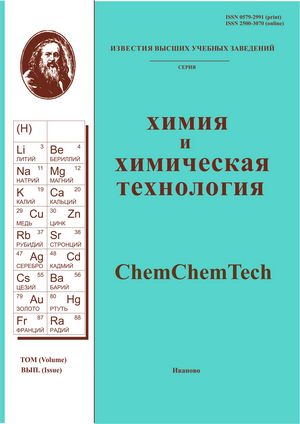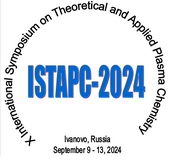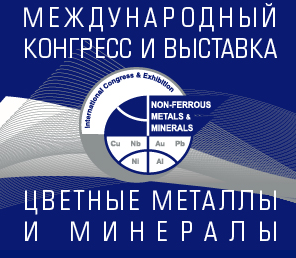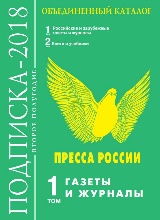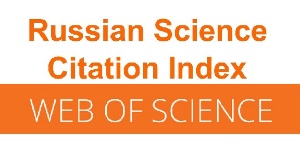СТАБИЛИЗАЦИЯ ЭМУЛЬСИЙ «МАСЛО-В-ВОДЕ» ВЫСОКОДИСПЕРСНЫМИ МИНЕРАЛЬНЫМИ ЧАСТИЦАМИ: БИОДЕГРАДАЦИЯ И ТОКСИЧЕСКОЕ ВОЗДЕЙСТВИЕ НА ГИДРОБИОНТЫ
Аннотация
Для процессов естественного самоочищения водных экосистем от разливов нефти существенное значение имеет наличие в толще воды минерального тонкодисперсного взвешенного вещества, способного к формированию так называемых нефтеминеральных агрегатов с последующей их миграцией в придонные слои и биодеградацией нефтяного загрязнения. В литературе имеется достаточно большое количество публикаций, посвященных условиям образования нефтеминеральных агрегатов и возможности их применения в технологиях ликвидации разливов нефти. Однако влияние нефтеминеральных агрегатов на морские экосистемы и их представителей мало изучено. Отсутствие систематических исследований, направленных на оценку экологического риска влияния нефтеминеральных агрегатов на морские экосистемы и эффективности биодеградации нефти с образованием нефтеминеральных агрегатов, приводит к весьма противоречивым выводам. В данном обзоре предпринята попытка обобщить имеющиеся данные об экологическом риске воздействия нефтеминеральных агрегатов на водные экосистемы и оценке влияния образования нефтеминеральных агрегатов на биодеградацию нефти. Описаны факторы, влияющие на токсичность нефтеминеральных агрегатов для гидробионтов, обитающих в водной толще и донных отложениях и перспективы дальнейших исследований в области их воздействия на окружающую среду с целью более активного использования в технологиях ликвидации разливов нефти. В данном обзоре использовался анализ 70 научных публикаций по ключевым словам «биодеградация» и «токсичность для водной среды» для систем «тонкодисперсное взвешенное вещество – нефтяные капли – морская вода», размещенных в базе данных научной периодики ScienceDirect с 1999 по 2021 гг.
Для цитирования:
Гречищева Н.Ю., Королев А.М., Заворотный В.Л., Стародубцева К.А., Али М.С. Стабилизация эмульсий «масло-в-воде» высокодисперсными минеральными частицами: биодеградация и токсическое воздействие на гидробионты. Изв. вузов. Химия и хим. технология. 2023. Т. 66. Вып. 2. С. 23-35. DOI: 10.6060/ivkkt.20236602.6729.
Литература
Seluyanov A.A., Chernova K.V., Shutov N.V. Analysis of the sources of oil entering the Earth's hydrosphere. Neftegaz. Delo. 2011. V. 9. N 3. P. 96-104 (in Russian).
Fitzpatrick F.A., Boufadel M.C., Rex J., Lee K., Graan T.P. Oil-particle interactions and submergence from crude oil spills in marine and freshwater environments—Review of the science and future science needs: U.S. Ge-ological Survey Open-File Report. 2015. 33 p. DOI: 10.3133/ofr20151076.ISSN 2331-1258.
Lee K., Stoffyn-Egli P., Tremblay G.H., Owens E.H., Sergy G.A., Guenette C.C., Prince R.C. Oil-mineral ag-gregate formation on oiled beaches: natural attenuation and sediment relocation. Spill Sci. Technol. Bull. 2003. N 3. P. 285–296. DOI: 10.1016/S1353-2561(03)00042-2.
Stoffyn-Egli P., Lee K. Formation and Characterization of Oil–Mineral Aggregates. Spill Sci. Technol. Bull. 2002. N 1. P. 31–44. DOI: 10.1016/S1353-2561(02)00128-7.
Loh A., Shankar R., Ha S.Y., An J.G., Yim U.H. Suspended particles enhance biodegradation of oil in sea. Sci. Total Environ. 2019. N 685. P. 324–331. DOI: 10.1016/j.scitotenv.2019.05.390.
Owens E.H., Humphrey B.B., Sergy G.A. Natural cleaning of oiled coarse sedimentshorelines in Arctic and At-lantic Canada. Spill Sci. Technol. Bull. 1994. N 1 P. 37–52. DOI: 10.1016/1353-2561(94)90006-X.
Lee K., Weise A.M., St-Pierre S. Enhanced oil biodegradation with mineral fine interaction. Spill Sci. Technol. Bull. 1996. N 3. P. 263–267. DOI: 10.1016/S1353-2561(97)00025-X.
Zhao L., Boufadel M.C., Katz J., Haspel G., Lee K., Thomas King T., Robinson B. A new mechanism of sediment attachment to oil in turbulent flows: Projectile particles. Env. Sci. Technol. 2017. N 51. P. 11020–11028. DOI: 10.1021/acs.est.7b02032.
Rebinder P.A., Serb-Serbina N.N. ZhFKh. 1931. N 2. P. 760 (in Russian).
Schwartz A., Perry J. Surfactants, their chemistry and technical applications. M.: Iz-vo inostr. lit-ry. 1953. 544 p. (in Russian).
Bragg J.R., Prince R.C., Harner E.J., Atlas R.M. Effectiveness of bioremediation for the Exxon Valdez oil spill. Nature. 1997. N 368. P. 413–418. DOI: 10.1038/368413a0.
Jahns H.O., Bragg J.R., Dash L.C., Owens E.H. Natural Cleaning of Shorelines Following the Exxon Valdez Spill. Spill Sci. Technol. Bull. 1991. N 1. P. 161–176. DOI: 10.7901/2169-3358-1991-1-167.
Rahsepar S., Alette A.M.L., Martijn P.J.S., Justine Sv.E., Albertinka J.M.H., Rijnaarts H.M. Oil biodegradation: Interactions of artificial marine snow, clay particles, oil and Corexit. Mar. Pollut. Bull. 2017. N 125. P. 186–191. DOI: 10.1016/j.marpolbul.2017.08.021.
Gao Y., Xiong D., Qi Z., Li X., Ju Z., Zhuang X. Distribution of Polycyclic Aromatic Hydrocarbons in Sunken Oils in the Presence of Chemical Dispersant and Sediment. J. Mar. Sci. Eng. 2019. V. 7(9). 282. DOI: 10.3390/jmse7090282.
Polli J.R., Zhang Y., Pan X. Dispersed crude oil amplifies germ cell apoptosis in Caenorhabditis elegans, fol-lowed a CEP-1-dependent pathway. Arch. Toxicol. 2014. N 88. P. 543–551. DOI: 10.1007/s00204-014-1198-6.
Sammarco P.W., Kolian S., Warby R.A., Bouldin J.L., Subra W.A., Porter S.A. Concentrations in human blood of petroleum hydrocarbons associated with the BP/Deepwater Horizon oil spill, Gulf of Mexico. Arch. Toxicol. 2016. N 90. P. 829–837. DOI: 10.1007/s00204-015-1526-5.
Zhang Y., Chen D., Ennis A.C., Polli J.R., Xiao P., Zhang B., Stellwag E. Chemical dispersant potentiates crude oil impacts on growth, reproduction, and gene expression in Caenorhabditis elegans. Arch. Toxicol. 2013. N 87. P. 371–382. DOI: 10.1007/s00204-012-0936-x.
Almeda R., Hyatt C., Buskey E.J. Ecotoxicology and environmental safety toxicity of dispersant Corexit 9500A and crude oil to marine microzooplankton. Eco-toxicol. Environ. Saf. 2014. N 106. P. 76–85. DOI: 10.1016/j.ecoenv.2014.04.028.
Almeda R., Wambaugh Z., Wang Z., Hyatt C., Liu Z., Buskey E.J. Interactions between zooplankton and crude oil: toxic effects and bioaccumulation of polycyclic aromatic hydrocarbons. Plos One. 2013. N 8. DOI: 10.1371/journal.pone.0067212.
Kirby M.F., Lyons B.P., Barry J., Law R.J. The toxico-logical impacts of oil and chemically dispersed oil: UV mediated phototoxicity and implications for environmental effects, statutory testing and response strategies. Mar. Pollut. Bull. 2011. N 54. P. 472–475. DOI: 10.1016/j.marpolbul.2006.11.011.
Aveyard R. Liquid droplets and solid particles at surfactant solution interfaces. J. Chem. Soc. Faraday Transact. 1995. N 17. P. 2681–2697. DOI: 10.1039/FT9959102681.
Guenette C.C., Sergy G.A., Owens E.H., Prince R.C., Lee K. Experimental design of the Svalbard shoreline field trials. Spill Sci. Technol. Bull. 2003. N 3. P. 245–256. DOI: 10.1016/S1353-2561(03)00038-0.
Muschenheim D.K., Lee K. Removal of Oil from the Sea Surface through Particulate Interactions: Review and Prospectus. Spill Sci. Technol. Bull. 2002. N 1. P. 9–18. DOI: 10.1016/S1353-2561(02)00129-9.
Sergy G.A., Guenette C.C., Owens E.H., Prince R.C., Lee K. Treatment of Oiled Sediment Shorelines by Sedi-ment Relocation. Proc. Int. Oil Spill Conf. 1999. N 1. P. 549–554. DOI: 10.7901/2169-3358-1999-1-549.
Lee K., Wohlgeschaffen G., Tremblay G.H., Johnson T., Sergy G., Prince R.C., Gueenette C.C., Owens E. Toxicity evaluation with the Microtox test to assess the impact of in-situ oiled shoreline treatment options: Natural attenuation and sediment relocation. Spill Sci. Technol. Bull. 2003. N 3. P. 273–284. DOI: 10.1016/S1353-2561(03)00039-2.
Niu H., Li Z., Lee K., Kepkay P., Mullin J.M. A Method for Assessing Environmental Risks of Oil-Mineral-Aggregate to Benthic Organisms. Hum Eco Risk Assess. 2010. N 4. P. 762–782. DOI: 10.1080/10807039.2010.501240.
Niu H., Li Z., Lee K., Kepkay P., Mullin J. Modeling the Long Term Fate of Oil-Mineral-Aggregates (OMAs) in the Marine Environment and Assessment of Their Potential Risks. Proc. of the 2011 Internat. Oil Spill Conf. 2011. N 1. P. 61–75. DOI: 10.1007/s10666-010-9228-0.
Prince R.C., Bare R.E., Garett R.M., Grossman M.J., Haith C.E., Keim L.G., Lee K., Holtom G.J., Lambert P., Sergy G.A., Owens E.H., Guenette C.C. Bioremediation of Stranded Oil on an Arctic Shoreline. Spill Sci. Technol. Bull. 2003. N 3. P. 303–312. DOI: 10.1016/S1353-2561(03)00036-7.
Rios M.C., Moreira I.T., Oliveira O.M., Pereira T.S., Almeida M., Trindade M.C., Menezes L., Caldas A.S. Capability of Paraguaçu estuary (Todos os Santos Bay, Brazil) to form oil–SPM aggregates (OSA) and their eco-toxicological effects on pelagic and benthic organisms. Mar. Pollut. Bull. 2017. N 114. P. 364–371. DOI: 10.1016/j.marpolbul.2016.09.055.
Sterling Jr. M.C., Bonner J.S., Ernest A.N.S., Page C.A., Autenrieth R.L. Characterizing aquatic sediment–oil aggregates using in situ instruments. Mar. Pollut. Bull. 2004. N 48. P. 533–542. DOI: 10.1016/j.marpolbul.2003.10.005.
Sun J., Zheng X. A review of oil-suspended particulate matter aggregation—a natural process of cleansing spilled oil in the aquatic environment. J. Environ. Monit. 2009. N 11. P. 1801–1809. DOI: 10.1039/B904829B.
Lee K., Wohlgeschaffen G., Tremblay G.H., Johnson T., Sergy G., Prince R.C., Gueenette C.C., Owens E. Toxicity evaluation with the Microtox test to assess the impact of in-situ oiled shoreline treatment options: Natural attenuation and sediment relocation. Spill Sci. Technol. Bull. 2003. N 3. P. 273–284. DOI: 10.1016/S1353-2561(03)00039-2.
Lee K., Merlin F.X. Bioremediation of oil on shoreline environments: development of techniques and guidelines. Pure Appl. Chem. 1999. N 1. P. 161–171. DOI: 10.1351/pac199971010161.
Khelifa A., Fieldhouse B., Wang Z., Yang C., Landriault M., Fingas M., Brown C.E., Gamble L. A laborato-ry study on formation of Oil-SPM Aggregates using the NIST Standard Reference Material 1941b: Proceedings of 30th Arctic Marine Oil spill Program Technical Seminar, Edmonton. 2007. [https://crrc.unh.edu/sites/crrc.unh.edu/files/media/docs/Publications/khelifaal2007_amop_paper-2.pdf]
Grechishcheva N.Yu., Perminova I.V., Kholodov V.A., Meshcheryakov S.V. Stabilization of Oilin-Water Emul-sions by Highly Dispersed Particles: Role in Self-Cleaning Processes and Prospects for Practical Application. Rus. J. Gen. Chem. 2017. N 9. P. 2166–2180. DOI: 10.1134/S1070363217090432.
Colcomb K., Bedborough D., Lunel T., Swannell R., Wood P., Rusin J., Bailey N., Haliwell C., Davies L., Sommerville M., Dobie A., Mitchell D., McDonagh M., Shimwell S., Davies B., Harries D., Lee K. Shoreline cleanup and waste disposal issues during the Sea Empress incident. Proc. of the Internat. Oil Spill Conf. Washington DC: American Petroleum Institute. 1997. P. 195–203. DOI: 10.7901/2169-3358-1997-1-195.
Gustitus S.A., Clement T.P. Formation, Fate, and Impacts of Microscopic and Macroscopic Oil-Sediment Residues in Nearshore Ma-rine Environments: A Critical Review. AGU Rev. Geophys. 2017. N 55. P. 1130–1157. DOI: 10.1002/2017RG000572.
Henry I.A., Netzer R., Davies E., Brakstad O.D. The influences of phytoplankton species, mineral particles and concentrations of dispersed oil on the formation and fate of marine oil-related aggregates. Sci. Tot. Environ. 2021. N 75. P. 141786. DOI: 10.1016/j.scitotenv.2020.141786.
Henry I.A., Netzer R., Davies E.J., Brakstad O.G. Formation and fate of oil-related aggregates (ORAs) in seawater at different temperatures. Mar. Pollut. Bull. 2020. N 159. P. 111483. DOI: 10.1016/j.marpolbul.2020.111483.
Jezequel R., Merlin F-X, Lee K. The influence of microorganisms on oil-mineral fine interactions in low ener-gy coastal environment. In: Proc. of the 1999 Internat. Oil Spill Conf. Washington DC: American Petroleum Insti-tute. 1999. N 1. P. 771–775. DOI: 10.7901/2169-3358-1999-1-771.
Lee K., Li Z., Robinson B., Kepkay P.E., Blouin M., Doyon B. Field trials of insitu oil spill countermeasures in iceinfested waters. Paper presented at International oil spill conference proceedings (IOSC), American Petroleum Institute. 2011. DOI: 10.7901/2169-3358-2011-1-160.
Lee K., Lunel T., Wood P., Swannell R., Stoffyn-Egli P. Shoreline cleanup by acceleration of clay–oil flocculation processes. In: Proc. of the 1997 Internat. Oil Spill Conf. Washington DC: American Petroleum Institute. 1997. P. 235–240. DOI: 10.7901/2169-3358-1997-1-235.
Leoncio L., de Almeida M., Silva M., Oliveira O.M.C., Moreira I.T.A., Lima D.F. Evaluation of accelerated bi-odegradation of oil-SPM aggregates (OSAs). Mar. Pollut. Bull. 2020. N 152. P. 110893. DOI: 10.1016/j.marpolbul.2020.110893.
Li H., Bao M., Li Y., Zhao L., King T., Xie Y. Effects of suspended particulate matter, surface oil layer thick-ness and surfactants on the formation and transport of oil-sediment aggregates (OSA). Inter. Biodet. Biodegr. 2020. N 149. P. 104925. DOI: 10.1016/j.ibiod.2020.104925.
Liu Z., Liu J., Gardner W.S., Shank G.C., Ostrom N.E. The impact of Deepwater Horizon oil spill on petroleum hydrocarbons in surface waters of the northern Gulf of Mexico. Deep Sea Research Part II: Topical Studies in Oceanography. 2016. N 129. P. 292–300. DOI: 10.1016/j.dsr2.2014.01.013.
Niu H., Li Z., Lee K., Kepkay P., Mullin J.M. The effects of waves and currents on the transport of oil-mineral-aggregates (OMAs) and their potential risks to benthic organisms. In: Proc. of the 33rd AMOP Techn. Sem. on Environ. Contam. and Resp. Halifax, Canada. 2009. P. 623–634. [https://inis.iaea.org/search/searchsinglerecord.aspx?recordsFor=SingleRecord&RN=41103189].
Pancal A., Swientoniewski L.T., Omarova M., Yu T., Donghui J.V., Lvov Yu.M. Bacterial proliferation on clay nanotube Pickering emulsions for oil spill bioreme-diation. Coll. Surf. B: Bioniterfaces. 2018. N 164. P. 27–33. DOI: 10.1016/j.colsurfb.2018.01.021.
Rahsepar S., Alette A.M.L., Martijn P.J.S., Justine Sv.E., Albertinka J.M.H., Rijnaarts H.M. Oil biodegradation: Interactions of artificial marine snow, clay particles, oil and Corexit. Mar. Pollut. Bull. 2017. N 125. P. 186–191. DOI: 10.1016/j.marpolbul.2017.08.021.
Weise A., Lee K. The effect of clay-oil flocculation on natural oil degradation. In: Proc. of the Internat. Oil Spill Conf. Washington DC: American Petroleum Institute. 1997. P. 955–956. DOI: 10.7901/2169-3358-1997-1-955.
Weise A., Nalewajko C., Lee K. Oil-Mineral Fine Interactions Facilitate Oil Biodegradation in Seawater. Envi-ron. Technol. 2008. N 20. P. 811–824. DOI: 10.1080/09593332008616877.
Loh A., Yim U.H., Ha S.Y., An J.G. A preliminary study on the role of suspended particulate matter in the bioa-vailability of oil-derived polycyclic aromatic hydrocar-bons to oysters. Sci. Total Environ. 2018. N 643. P. 1084–1090. DOI: 10.1016/j.scitotenv.2018.06.129.
Khelifa A., Fingas M., Brown C. Effects of dispersants on Oil-SPM aggregation and fate in US coastal Waters. Coastal Response Research Center at University of New Hampshire. 2008. 57 p. [http://www.circac.org/wp-con-tent/uploads/AliKhelifa_FinalReport_NoAppendices.pdf].
Cai Z.Q., Fua J., Liua W., Fu K.M., O'Reilly S.E., Zhao D. Effects of oil dispersants on settling of marine sediment particles and particle-facilitated distribution and transport of oil components. Mar. Pollut. Bul. 2017. N 114. P. 408–418. DOI: 10.1016/j.marpolbul.2016.09.057.
Lee K., Li Z., Robinson B., Kepkay P.E., Ma X., Co-banli S., King T., Blouin M., Doyon B. Insitu remediation of oil spills in iceinfested waters: enhanced disper-sion and biodegradation of petroleum hydrocarbons. Proc. of the 2009 Internat. Conf. for Spill Prevention, Re-sponse and Restoration, London. 2009. [https://www.interspill.org/wp-content/uploads/2021/11/1430_lee.pdf].
Loh A., Shim W.J., Ha S.Y., Yim U.H. Oil-suspended particulate matter aggregates: Formation mechanism and fate in the marine environment. J. Ocean Sci. 2014. N 4. P. 329–341. DOI: 10.1007/s12601-014-0031-8.
Prince R.C., McFarlin K.M., Butler J.D., Febbo E.J., Wang F.C.Y., Nedwed T.J. The primary biodegradation of dispersed crude oil in the sea. Chemosphere. 2013. N 90. P. 521–526. DOI: 10.1016/j.chemosphere.2012.08.020.
Moreira I.T.A., Oliveira O.M.C., Silva C.S., Rios M.C., Queiroz A.F.S., Assunção R.V., Carvalho A.P.N. Chemometrics applied in laboratory study on formation of oil–spm aggregates (OSAs) — A contribution to eco-logical evaluation. Microchem. J. 2015. N 118. P. 198–202. DOI: 10.1016/j.microc.2014.09.007.
Gupta A.K., Gupta M. Cytotoxicity suppression and cellular uptake enhancement of surface modified magnetic nanoparticles. Biomat. 2005. N 26. P. 1565–1573. DOI: 10.1016/j.biomaterials.2004.05.022.
Sharma A.K., Schmidt B., Frandsen H., Jacobsen N.R., Larsen E.H., Binderup M.L. Genotoxicity of unmodified and organo-modified montmorillonite. Mutat. Res – Genet. Toxicol. Environ. Mutagen. 2010. N 700. P. 18–25. DOI: 10.1016/j.mrgentox.2010.04.021.
Yang Z., Hua Y., Mirnaghi F., Hollebone B.P., Jackman P., Brown C.E., Yang C., Shah K., Landriault M., Chan B. Effect of evaporative weathering and oil-sediment interaction on the fate and behavior of diluted bitumen in marine environments. Part 2: The water ac-commodated and particleladen hydrocarbon species and toxicity of the aqueous phase. Chemosphere. 2018. N 91. P. 145-155. DOI: 10.1016/j.chemosphere.2017.10.033.
Zubkova O.S., Alekseev A.I., Zalilova M.M. Research of combined use of carbon and aluminum compounds for wastewater treatment. ChemChemTech [Izv. Vyssh. Uchebn. Zaved. Khim. Khim. Tekhnol.]. 2020. V. 63. N 4. P. 86-91. DOI: 10.6060/ivkkt.20206304.6131.
Meador J.P. Bioaccumulation of PAHs in marine invertebrates. In: PAHs: An Ecological Perspective. Ed. by P.E.T. Douben. 2003. P. 147–172. DOI: 10.1002/0470867132#page=151.
Ziervogel K., Joye S.B., Arnosti C. Microbial enzymatic activity and secondary production in sediments affected by the sedimentation event of oily-particulate matter from the Deepwater Horizon oil spill. Deep-Sea Research II: Topical Studies in Oceanography. 2014. N 129. P. 241–248. DOI: 10.1016/j.dsr2.2014.04.003.
Murawski S.A., Hogarth W.T., Peebles E.B., Barbeiri L. Prevalence of external skin lesions and polycyclic aromatic hydrocarbon concentrations in Gulf of Mexico fishes, post-Deepwater Horizon. Trans. Am. Fish. Soc. 2014. N 143. P. 1084–1097. DOI: 10.1080/00028487.2014.911205.
Snyder S.M., Pulster E.L., Wetzel D.L., Murawski S.A. PAH Exposure in Gulf of Mexico demersal fishes, Post-Deepwater Horizon. Environ. Sci. Technol. 2015. N 49. P. 8786–8795. DOI: 10.1021/acs.est.5b01870.
Bonisoli-Alquati A., Xu W., Stouffer P.C., Taylor S.S. Transcriptome analysis indicates a broad range of toxic effects of Deepwater Horizon oil on Seaside Sparrows. Sci. Total. Environ. 2020. N 720. P. 137–183. DOI: 10.1016/j.scitotenv.2020.137583.
Huba A.K., Gardinali P.R. Characterization of a crude oil weathering series by ultrahigh-resolution mass spec-trometry using multiple ionization modes. Sci. Total Envi-ron. 2016. N 1. P. 563–564:600–610. DOI: 10.1016/j.scitotenv.2016.03.233.
Kostka J.E., Prakash O., Overholt W.A., Green S.J., Freyer G., Canion A., Huettel M. Hydrocarbon-degrading bacteria and the bacterial community response in Gulf of Mexico beach sands impacted by the Deep-water Horizon oil spill. App. Env. Micr. 2011. N 77. P. 7962–7974. DOI: 10.1128/AEM.05402-11.
Bhattacharya D., Clement T.P., Dhanasekaran M. Evaluating the neurotoxic effects of Deepwater Horizon oil spill residues trapped along Alabama’s beaches. Life Sciences. 2016. N 155. P. 161–166. DOI: 10.1016/j.lfs.2016.05.002.
NOAA Shoreline assessment manual 3rd ed HAZMAT Report. Seattle, Office of Response and Restoration, National Oceanic and Atmospheric Administration. 2000.
Wise J.P. Jr., Wise J.T., Wise C.F., Wise S.S., Gianios C. Jr., Xie H. Concentrations of the genotoxic metals, chromium and nickel, in whales, tar balls, oil slicks, and released oil from the gulf of Mexico in the immediate af-termath of the deepwater horizon oil crisis: Is genotoxic metal exposure part of the deepwater horizon legacy. Env. Sci. Tech. 2014. N 48. P. 2997–3006. DOI: 10.1021/es405079b.

